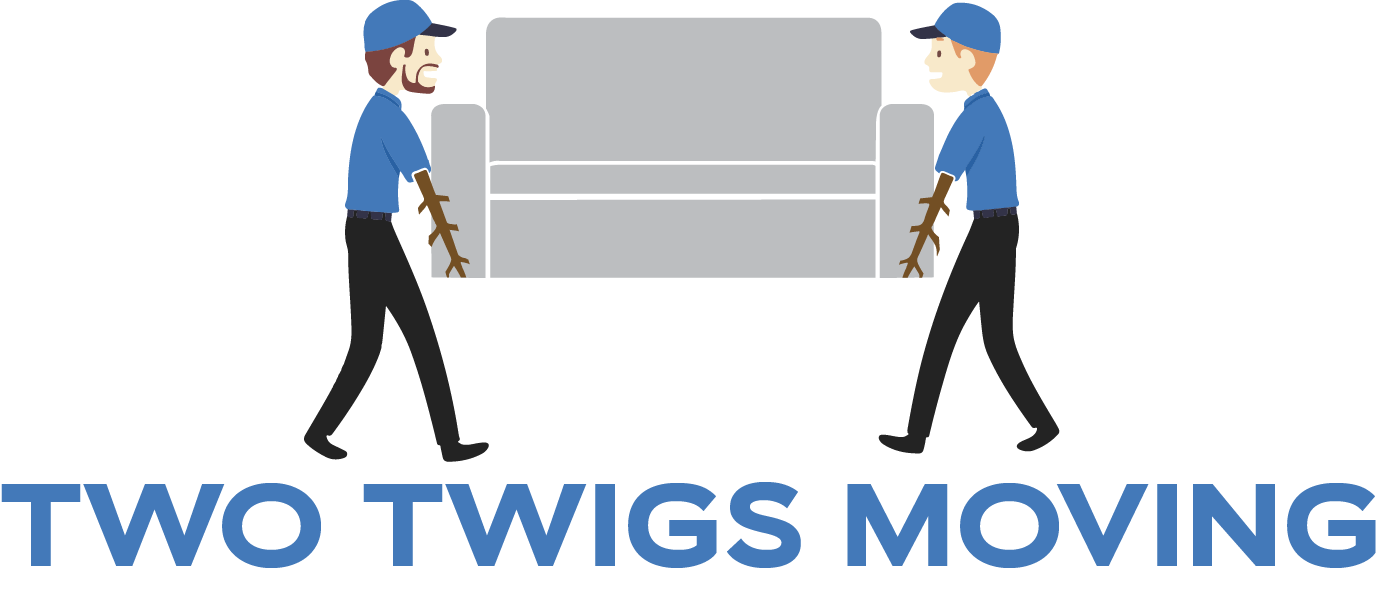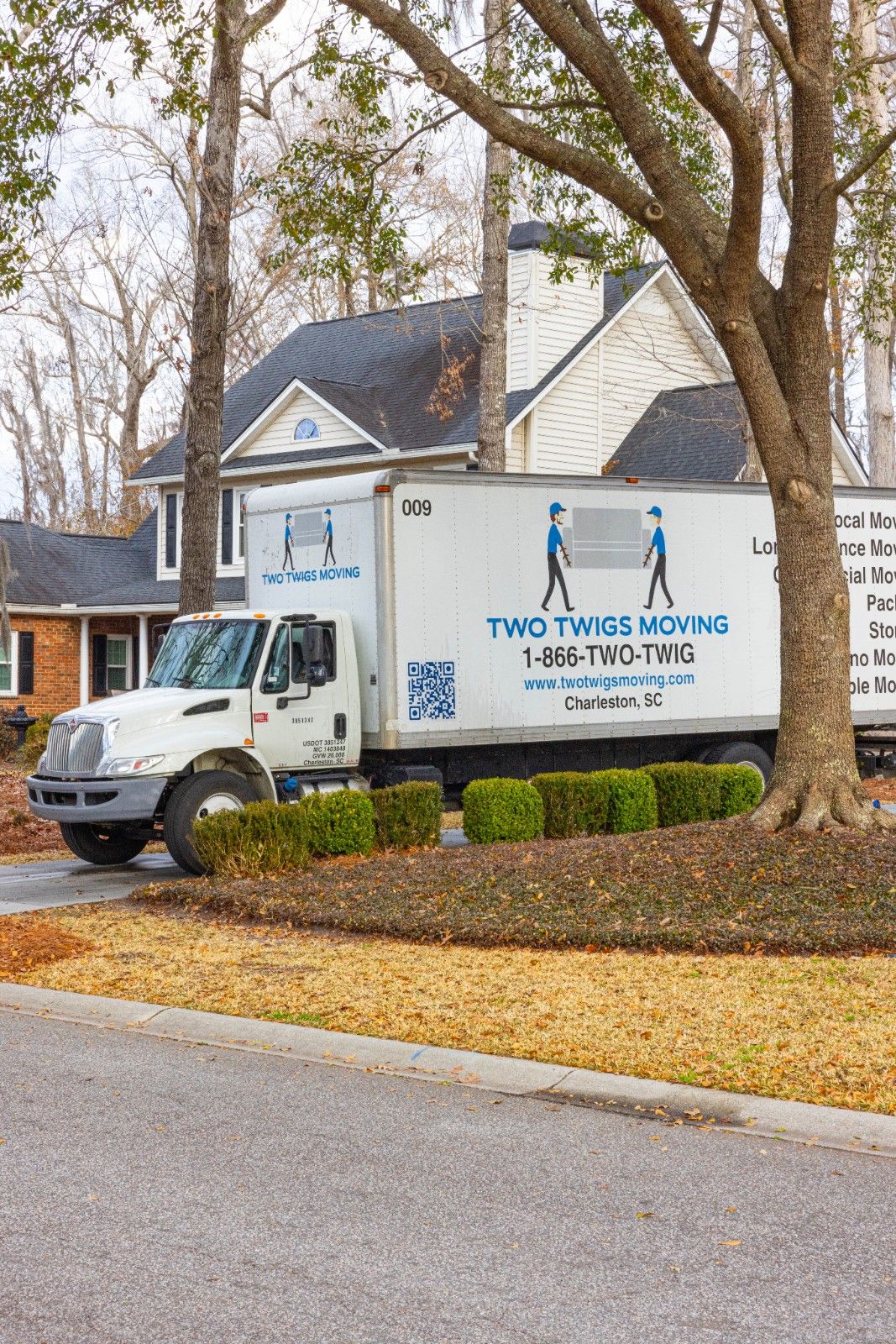Relocating artwork is a delicate task that requires careful planning to protect your pieces from damage. Whether you’re moving framed art, sculptures, or oversized pieces, proper preparation is critical. Here’s a quick overview of the most important steps:
- Create an Inventory: Document each piece, including photos and condition notes, to track your collection and assist with insurance claims.
- Pack Carefully: Use high-quality materials like glassine, bubble wrap, and custom crates to protect your artwork.
- Label Clearly: Mark boxes with "Fragile" and specific handling instructions to ensure safe transport.
- Load Securely: Position artwork upright and secure it to prevent shifting during transit.
- Consider Climate Control: Maintain stable temperature and humidity levels, especially for sensitive pieces.
- Hire Professionals: Specialized art movers offer expertise, tools, and insurance for safe relocation.
Inventory and Documentation
Keeping a detailed record of your artwork before moving is essential. It helps you track each piece, its condition, and ensures nothing gets lost along the way. Plus, this documentation is critical if you need to file an insurance claim.
Create a Detailed Inventory List
Start by making a thorough inventory of your collection. This step is key to safeguarding against lost or damaged pieces. Work systematically – begin with the most recently handled artwork and move through the rest of your collection.
For each piece, assign a unique number and document details like its title, year, medium, dimensions, current location, and provenance. For high-value items, also include exhibition history and bibliography. Use tools like Word or Excel to organize this information, and don’t forget to add high-quality photos for each piece.
This method not only makes the move more organized but also ensures you can keep track of your collection at every stage.
Document Condition Before Moving
Photographing your artwork before the move is another critical step. Take images from multiple angles, paying close attention to any existing imperfections. These photos will be invaluable if you need to prove damage occurred during transit.
Adrienne Reid, Vice President at Huntington T. Block, underscores the importance of digital documentation:
"A good digitally stored inventory, and quality digital photographs of each artwork is paramount. These should be stored offsite and/or in the cloud so that in the event of a catastrophic loss, an insured has documentation to provide to the adjuster."
Store both physical and digital copies of these images securely. Organize them by location or category to make retrieval easier later on.
Prepare Information for Insurance
Artwork is particularly vulnerable during a move, making insurance preparation a must. Start by noting the appraised value and condition of each piece. Keep in mind that standard carrier insurance often falls short for high-value art. You may need to purchase additional full-value protection.
Gather all relevant documents – receipts, sales records, certificates of authenticity, and provenance details. These will be crucial if you need to file a claim.
It’s also worth noting that many moving companies don’t automatically cover artwork under their standard policies. To ensure proper coverage, list each piece as a separate line item and consider full-value protection. Be prepared to provide proof of value if damage occurs. On average, moving insurance costs between 1-5% of the total value of your possessions.
Once your inventory and documentation are complete, you’ll be ready to move on to securing the right packing materials for your artwork’s safe transport.
Packing Materials and Preparation
Taking the right steps to pack and prepare your artwork is crucial to keeping it safe during transit. The supplies you use and the care you put into packing can make all the difference in ensuring your pieces arrive intact.
Gather the Right Packing Supplies
The first step is to stock up on high-quality packing materials. Start by covering the artwork with glassine or acid-free tissue paper to protect against dust, moisture, and scratches.
You’ll also need:
- Bubble wrap for cushioning
- Corner protectors to shield edges
- Foam boards for extra support
- Artist tape or painter’s tape to secure layers without leaving residue
For containers, invest in picture boxes or mirror boxes specifically designed for artwork. Line these boxes with packing paper and fill any empty spaces to prevent movement during transit. If you’re packing unframed canvas paintings, consider using cylindrical cardboard protectors to avoid rolling damage, and add rigid dividers if you’re packing multiple pieces together to reduce friction.
Preparing the Artwork
Before packing, gently clean and dust your artwork with a soft cloth or microfiber towel. Make sure the surface is completely dry to avoid any moisture-related issues. Once clean, secure the protective layer of glassine or tissue paper to shield the surface from dust and scratches .
For framed artwork with glass, apply tape in an "X" pattern across the glass. This technique holds the glass together if it breaks, minimizing potential damage to the piece beneath. Afterward, wrap the artwork in bubble wrap with the bubbles facing inward for maximum cushioning. If you’re worried about moisture, add a layer of plastic wrap on top. Finally, protect the corners with cardboard corner guards, securing them with packing tape to prevent impact damage during transport.
Choosing the Right Box Size
Measure each piece carefully and select boxes that allow for 2–3 inches of padding on all sides. Too much empty space can lead to shifting, while a box that’s too tight won’t provide adequate cushioning .
For especially valuable or delicate pieces, custom-built crates are a great option. These offer excellent shock absorption and help protect against environmental risks like temperature changes and humidity. Wrap each item individually and pack them into separate boxes, especially for larger pieces. Use foam padding or moving blankets to fill any gaps, and store boxes upright. Clearly label them with "FRAGILE – ARTWORK" and "KEEP UPRIGHT" to ensure careful handling . With everything securely packed, you’re ready to move on to specific packing methods tailored to different types of artwork.
Packing Methods for Different Artwork Types
Packing artwork for transit requires careful attention to its specific form and structure. Each type of artwork has unique needs, and using the right techniques can make all the difference in ensuring it arrives safely. Here’s how to handle different types of artwork.
Framed Art and Photographs
Framed pieces are especially delicate because of their glass surfaces and rigid frames. Start by applying artist’s tape in a star pattern across the glass. This helps hold the glass together if it breaks, preventing shards from damaging the artwork underneath.
Wrap each framed piece individually using glassine or acid-free tissue paper. Add corner protectors to safeguard the frame edges, then wrap the entire piece in bubble wrap with the bubbles facing inward. If you’re packing multiple framed items together, place heavy cardboard sheets between each wrapped piece to avoid any rubbing or damage.
Always pack framed art vertically in snug picture boxes, never flat. Fill empty spaces in the box with crushed packing paper or foam to keep the pieces from shifting. For extra protection, consider using a Picture Packer Kit alongside the box. When loading the moving truck, secure the box between sturdy items like a couch or dresser to keep it stable during the journey.
Sculptures and 3D Artwork
Three-dimensional artwork demands extra care, especially for pieces with fragile or protruding parts. Start by wrapping the entire sculpture in plastic wrap, paying extra attention to delicate areas. Then, add a generous layer of bubble wrap, focusing on weak points.
For especially fragile or valuable sculptures, consulting professional art handlers is a wise option.
Choose a container slightly larger than the wrapped sculpture. For heavier or larger pieces, a wooden crate provides better protection than a cardboard box. Create a cushioned base using packing paper or foam peanuts, then carefully place the sculpture inside. Ensure it doesn’t touch the container’s sides. Fill all remaining gaps with more packing material to immobilize the piece completely, and seal the container securely. Avoid stacking heavy items on top of boxes containing sculptures.
Oversized or Irregularly Shaped Pieces
Artwork that doesn’t fit standard dimensions requires a more customized packing approach. Use containers specifically designed for oversized or irregularly shaped pieces. For canvas art, plastic palette wrap works well to protect against abrasions without coming into direct contact with the surface. Be sure to fill any empty spaces in the container with padding materials to prevent movement during transport.
sbb-itb-a5538b6
Labeling, Loading, and Transport
Once your artwork is packed, the next step is ensuring it’s properly labeled and securely loaded for transport. Careful attention to these details can mean the difference between your artwork arriving in perfect condition or sustaining avoidable damage.
Clear and Detailed Labeling
Every container should be clearly marked with warnings like "Fragile", "This Side Up," and "Handle with Care" to alert handlers to the delicate nature of the contents. Use bright, easy-to-spot stickers or markers to make these labels stand out.
In addition to general handling instructions, include specific details about the contents. For example, label boxes as "Framed Art", "Mirror," or "Sculpture" so movers know what type of item they’re dealing with. For pieces of significant value or historical importance, include the artwork’s title, artist, and any special handling instructions. This extra layer of detail ensures that everyone involved in the transport understands the care required.
Once labeling is complete, the focus shifts to loading and securing your artwork for the journey.
Proper Loading and Placement
The way you load your artwork into the transport vehicle plays a crucial role in keeping it safe. Always position artwork boxes upright rather than laying them flat. This reduces the risk of pressure-related damage like warping or cracking.
Keep artwork away from heavy items, using straps or tie-downs to secure it in place. If you’re using a personal vehicle, create a padded barrier around smaller pieces and position them upright to prevent shifting during transit.
When handling artwork, carry it upright, facing you, and use two hands to hold it securely from both sides. For heavier or oversized pieces, use ramps or lifts to avoid unnecessary strain or accidents.
Loading your artwork correctly is only part of the equation – maintaining the right environment during transport is just as important.
Climate-Controlled Transport
Keeping a stable temperature and humidity level is essential to prevent damage like warping or cracking. This is especially critical for artwork made from sensitive materials such as wood or canvas.
For high-value or particularly fragile pieces, professional climate-controlled transport is often the best option. These specialized vehicles maintain consistent temperature and humidity levels, regardless of external weather conditions.
If professional services aren’t an option, avoid exposing artwork to extreme temperatures for prolonged periods. During long trips, plan for brief stops in climate-controlled areas to give your artwork a break from fluctuating conditions. For very valuable collections, consider dividing the move into shorter segments with climate-controlled rest stops to minimize exposure to environmental changes over extended periods.
Professional Help for Artwork Moving
Once your artwork is carefully labeled and securely loaded, the next step involves reducing any remaining risks – and this is where professional movers come in. When dealing with irreplaceable pieces, their expertise ensures that every detail aligns with your meticulous standards. Moving artwork isn’t the same as moving everyday household items; it requires specialized knowledge, skills, and tools to meet its unique demands.
Specialized Moving Services
Professional art movers undergo extensive training in handling, packing, and transporting art safely. They use tested techniques and materials to protect your pieces during every stage of the move.
"Professional art movers should possess a specific set of qualifications and expertise in art handling to meet the job requirements."
When choosing a mover, look for art handlers with experience in fine art shipping, proven skills in packing, and expertise in installation.
Two Twigs Moving is a standout option, offering tailored solutions for fine art. Their movers are thoroughly background-checked and trained to handle delicate items with care. With experience in managing challenging moves like pianos and pool tables, they bring a level of precision that’s essential for art relocation.
It’s also essential to verify that your chosen movers have the right equipment, extensive industry experience, and insurance coverage specifically designed for fine art. Membership in professional organizations like the American Alliance of Museums (AAM) or the International Convention of Exhibition and Fine Art Transporters (ICEFAT) is another good indicator of their commitment to high standards.
Customizable Packages and Storage Solutions
Professional art moving services are designed with flexibility in mind. Top providers offer tailored solutions that cover everything from crating and transport to storage and installation.
For example, Two Twigs Moving offers customizable service packages to meet the specific needs of your collection. Their full-service option includes packing, loading, transportation, unloading, and unpacking – ideal for collectors who want a hands-off experience. Alternatively, their basic service focuses on secure transportation and careful handling during loading and unloading, which is perfect for those who prefer to pack their items themselves.
Many professional movers also assign a personal consultant to oversee every detail of your move, including planning, packing, transportation, storage, delivery, and documentation. This ensures that all aspects of your relocation are handled smoothly. Storage is another key consideration. Two Twigs Moving provides short-term storage in secure, climate-controlled facilities with advanced monitoring systems. These facilities can be particularly useful if your new location isn’t ready yet or if you need additional time to plan the installation of your pieces.
Custom crates are often used to shield artwork from shocks and environmental factors like humidity and temperature changes. Climate-controlled vehicles further protect your collection by maintaining stable conditions during transit.
Before finalizing your choice of mover, schedule a pre-move consultation to go over logistics, timelines, and any specific requirements for your artwork. This meeting gives you a chance to evaluate their professionalism and confirm that they fully understand your collection’s needs.
Conclusion
By sticking to this detailed checklist, you can ensure that your artwork is moved with the care and precision it deserves. A structured approach is key to protecting the value, history, and emotional connection tied to your pieces during relocation.
Professional art movers have been shown to significantly reduce the risk of damage during transit.
Every step in your preparation strengthens your artwork’s defense against potential risks during the move. This checklist acts as a safeguard, addressing all the critical elements needed to protect your collection.
Expert movers understand these challenges and bring specialized skills to the table. Two Twigs Moving exemplifies this expertise, offering flexible packages and climate-controlled storage to accommodate collections of any size or complexity. Using advanced techniques like custom crating and high-quality packing materials, they ensure your artwork reaches its destination safely.
When careful planning meets expert handling, accountability is maintained throughout the entire process. With thorough documentation, specialized tools, and professional know-how working together, your artwork will arrive in pristine condition – preserving not just its financial worth, but its emotional and historical significance for years to come.
FAQs
What should I consider when selecting packing materials to safely move artwork long distance?
When transporting artwork over long distances, selecting the right protective materials is crucial to ensure your pieces stay safe. Start with acid-free paper to shield delicate surfaces, then add layers of bubble wrap and foam padding for extra cushioning. For framed artwork, use corner protectors and glassine paper to guard against scratches or other damage. Pack everything in sturdy, artwork-specific boxes to keep items secure during transit. These careful steps can make all the difference in maintaining your artwork’s condition throughout the journey.
How can I make sure my artwork is properly insured for a long-distance move?
To keep your artwork safe during a long-distance move, it’s worth considering specialized art transit insurance. This type of coverage is tailored to protect against potential damage or loss while your pieces are being transported. Typically, the cost falls between 1% and 2% of the artwork’s value per year, depending on the specific policy.
For the best protection, explore a full value protection policy, which insures each piece for its total worth. Before the move, take time to carefully review the policy terms and thoroughly document your artwork. Use photos and appraisals to record the condition and value of each item. These extra steps can provide both peace of mind and financial security while your art is on the move.
Why is climate control important when moving artwork, and how can you ensure it stays protected during transit?
When transporting artwork, maintaining proper climate control is essential. Fluctuations in temperature and humidity can lead to serious damage, such as warping, cracking, or even mold. To safeguard your pieces, aim for a consistent environment with temperatures between 65°F and 75°F and humidity levels ranging from 40% to 50%.
For long-distance moves, using climate-controlled transportation services is a smart choice to keep conditions stable during transit. You can also track temperature and humidity with portable monitoring devices. Make sure to pack the artwork securely with protective materials to shield it from environmental changes. These precautions go a long way in ensuring your artwork stays in excellent condition throughout the move.


.svg)


